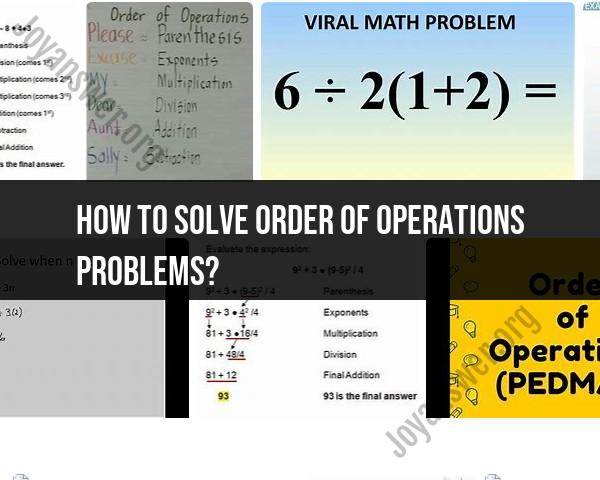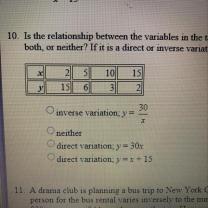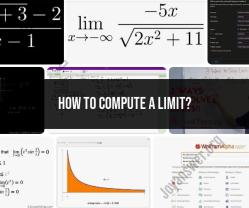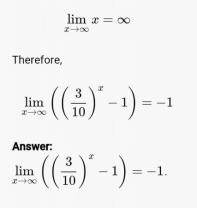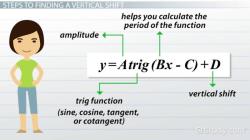How to solve Order of operations problems?
Solving order of operations problems involves following a specific set of rules to determine the correct sequence in which to perform mathematical operations within an expression or equation. To solve these problems, you should apply the order of operations, typically remembered using the acronym PEMDAS, which stands for:
P: Parentheses - Simplify expressions inside parentheses first. Start with the innermost parentheses and work your way out.
E: Exponents - Evaluate expressions with exponents (powers and roots).
MD: Multiplication and Division - Perform multiplication and division from left to right as they appear in the expression.
AS: Addition and Subtraction - Perform addition and subtraction from left to right as they appear in the expression.
Here are some strategies for solving order of operations problems:
Identify Parentheses: Look for parentheses in the expression and start by simplifying the expressions within the innermost set of parentheses first. Work your way outward if there are nested parentheses.
Handle Exponents: After simplifying any expressions within parentheses, evaluate any exponents in the expression. Perform the operations inside the exponents, such as raising a number to a power or taking a square root.
Multiplication and Division: Proceed to perform any multiplication or division operations from left to right as they appear in the expression. Be sure to follow the left-to-right order.
Addition and Subtraction: Finally, perform any addition or subtraction operations from left to right as they appear in the expression.
Use Parentheses to Clarify: If necessary, use additional parentheses to make the order of operations explicit. This can help avoid confusion and ensure that the operations are carried out in the desired sequence.
Here's an example to illustrate the process:
Expression: 3 + 4 × (2^2 - 1)
- Inside the parentheses: 2^2 - 1 = 4 - 1 = 3
- Exponents: 3 + 4 × 3
- Multiplication: 3 + 12
- Addition: 15
So, the expression simplifies to 15 by following the order of operations (PEMDAS).
Remember that correctly following the order of operations is essential to ensure that mathematical expressions are evaluated consistently and accurately. If in doubt, use parentheses to clarify the order in which operations should be performed.
Step-by-step guide: How to solve order of operations problems in mathematics?
To solve order of operations problems, follow these steps:
- Evaluate any expressions within parentheses.
- Evaluate any exponents.
- Multiply and divide from left to right.
- Add and subtract from left to right.
This sequence of operations is often remembered by the acronym PEMDAS, which stands for Parentheses, Exponents, Multiplication and Division, Addition and Subtraction.
Examples of solving order of operations problems with detailed explanations.
Example 1:
5 + (2 * 3) - 1
Solution:
- Evaluate the expression within the parentheses:
5 + (6) - 1
- Multiply and divide from left to right:
5 + 6 - 1
- Add and subtract from left to right:
5 + 6 - 1 = 10
Example 2:
(2 + 4) ^ 3 - 5
Solution:
- Evaluate the expression within the parentheses:
(6) ^ 3 - 5
- Evaluate the exponent:
6 ^ 3 - 5
- Multiply and divide from left to right:
216 - 5
- Add and subtract from left to right:
216 - 5 = 211
Practice exercises: How to strengthen your skills in solving order of operations problems.
Here are some practice exercises to help you strengthen your skills in solving order of operations problems:
- 5 + 6 * 3 - 1
- (2 + 4) ^ 3 - 5
- 3 / (4 - 2) + 1
- (5 + 2) * 4 - 8
- 10 / (2 + 3) * 5
Strategies for simplifying complex mathematical expressions using the order of operations.
When simplifying complex mathematical expressions using the order of operations, it is helpful to use the following strategies:
- Identify the different operations in the expression.
- Group the operations together according to the order of operations.
- Evaluate each group of operations from the inside out.
- Continue evaluating the groups of operations until the entire expression has been simplified.
Common challenges students face when learning to solve order of operations problems.
One of the most common challenges that students face when learning to solve order of operations problems is remembering the order of operations. To help students remember the order of operations, teachers often use the acronym PEMDAS.
Another common challenge is understanding how to apply the order of operations to complex mathematical expressions. To help students with this challenge, teachers often provide them with practice exercises and examples.
Finally, some students may struggle with the order of operations because they have difficulty understanding the different types of operations. To help students with this challenge, teachers often provide them with explicit instruction on the different types of operations and how to perform them.
